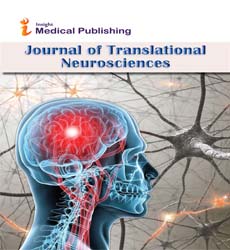Computational modeling of the induced Electric Fields (EF) from tES
Theodore P *
Department of Neurology, University of California-San Francisco, San Francisco, CA, USA
- *Corresponding Author:
- Theodore P
Department of Neurology, University of California-San Francisco, San Francisco, CA, USA
E-mail:Theodorearnoon@yahoo.com
Received date: : August 02, 2022, Manuscript No. IPNBT-22-14668; Editor assigned date: : August 04, 2022, PreQC No. IPNBT-22-14668 (PQ); Reviewed date:August 12, 2022, QC No. IPNBT-22-14668; Revised date:: : August 22, 2022, Manuscript No. IPNBT-22-14668 (R); Published date:September 01, 2022, DOI: 10.36648/2573-5349.7.5.001
Citation: P Theodore (2022) Computational modeling of the induced Electric Fields (EF) from tES. J Transl Neurosc Vol.7 No.5: 001.
Description
The use of noninvasive neurostimulation techniques to modify cognitive function in basic research, clinical, and rehabilitation settings has grown exponentially over the past two decades. Two of the most commonly applied techniques are variants of transcranial electrical stimulation (tES): transcranial Direct Current Stimulation (tDCS) and transcranial Alternating Current Stimulation (tACS). Despite the broad use of tDCS, the effects on cognitive performance are inconsistent, leading to poor reliability in outcomes and limited reproducibility of findings. Although less research has employed tACS compared to tDCS, similar problems exist within the tACS literature. Together, the field of tES is disproportionally affected by publication bias and the file-drawer problem of null findings. Despite this, the successes of tES in research settings have inspired widespread applications in uncontrolled do-it-yourself environments and commercial products. Therefore, if tES were ever to become a reliable tool for scientists, a viable therapeutic for patients, or a safe consumer product, it is necessary to understand the source of this variability to control tES effects – both inside and outside of laboratory settings. When implementing tES, one of the most important parameters to be determined is the intensity at which to stimulate. Generally, researchers select a stimulating current between 1 mA and 2 mA, with very few exceptions. Intensity is set in this range because it is well tolerated, it can modulate motor cortex excitability, and alter cognitive function.
Recruitment of Neurons into a Local Oscillating Network
As such, it is common to select intensity within this range and provide that same intensity to every participant. Unfortunately, there is a fundamental problem with this approach. Computational modeling of the induced Electric Fields (EF) from tES has indicated that differences in skull thickness, cerebrospinal fluid, subcutaneous fat, gyral pattern, and local tissue heterogeneities yield differences in resistivity that will differentially impede current flow to the cortex. The consequence of this anatomical variability can lead to 1.5 to 3-fold differences in the induced EF in cortex and these computational models have been validated. Thus, applying the same tES intensity to all participants will yield dramatically different EF magnitudes induced in the cortex across participants. This is critically important because tES effects are intensity specific, such that low intensities can have inhibitory effects, whereas higher intensities can be excitatory. Yet, direct evidence that modeled EF in the brain can predict tES effects on cognitive function is needed. When implementing tACS, another important parameter to select is the frequency of stimulation. It is thought that tACS modulates cognitive function via a combination of neural entrainment and resonance, which results in the recruitment of neurons into a local oscillating network that in turn affects both local and network connectivity. To determine the stimulation frequency, one of two approaches is typically employed: 1) guess-and-check, where multiple frequencies are assessed for efficacy, or 2) a priori knowledge, where previous research has identified a frequency of interest.
Matching the Stimulation Frequency with an Individual's Endogenous Peak Frequency
While each approach is useful in its own right, recent research has indicated that a third approach may be ideal. Specifically, tACS effects may be most prominent when the stimulation is close to an individual's endogenous peak frequency. Yet, evidence is highly limited in demonstrating that optimal tACS effects may be achieved by matching the stimulation frequency with an individual's endogenous peak frequency. It was also hypothesized that variable tACS effects would be related to individual differences in neuroanatomy that would yield different tACS-induced EF in the brain. Results supported this hypothesis, such that participants in the Long Theta stimulation group exhibited the greatest improvements in multitasking when the modeled EF was largest, particularly in the frontal lobe. This relationship was not observed in the Short Theta or Control groups. Additionally, it was hypothesized that variable tACS effects would also be related to individual differences in the baseline peak theta frequency. This too was observed, such that the Long Theta group, and not the Short Theta or Control groups, exhibited the greatest improvements in multitasking when their baseline peak theta frequency was closest to the stimulation frequency. Together, modeled EF and baseline frequency were able to jointly account for 54%–65% of the variance in tACS effects, which includes both acute and sustained effects 1 day and 1 month later.
Open Access Journals
- Aquaculture & Veterinary Science
- Chemistry & Chemical Sciences
- Clinical Sciences
- Engineering
- General Science
- Genetics & Molecular Biology
- Health Care & Nursing
- Immunology & Microbiology
- Materials Science
- Mathematics & Physics
- Medical Sciences
- Neurology & Psychiatry
- Oncology & Cancer Science
- Pharmaceutical Sciences
